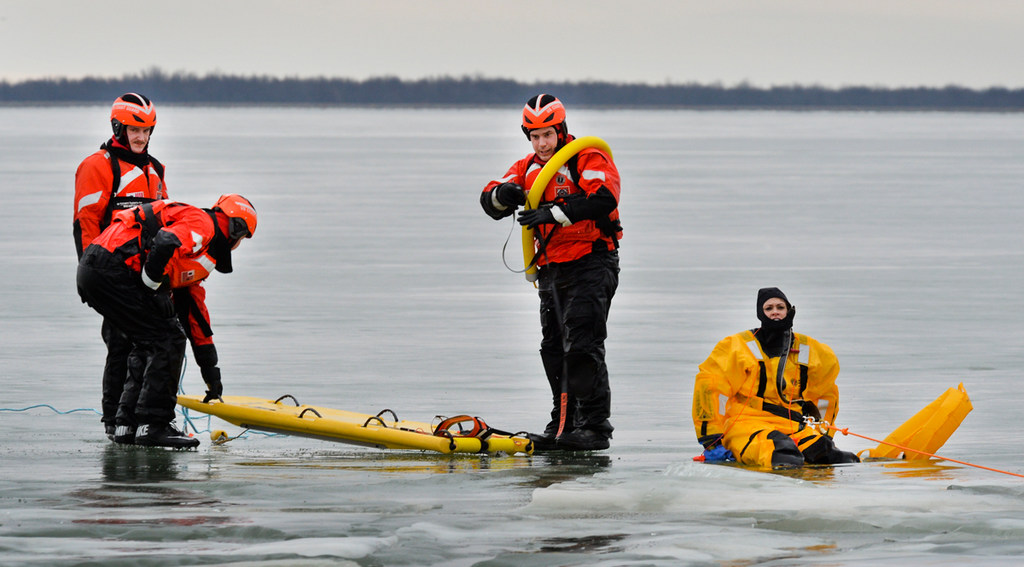Featured News - Current News - Archived News - News Categories
Passersby near the boat ramp at the New York Power Authority’s Robert Moses Niagara Power Plant’s Lewiston Reservoir on Feb. 5 would have witnessed an unusual sight: people in the freezing water amidst four to six inches of floating ice simulating the rescuing of individuals who’ve fallen into the water after stepping out on unstable ice on the reservoir.
The event was part of a training exercise conducted annually since 2015 by the Niagara Power Project’s medical emergency response team (MERT). Participants also included members of the underwater recovery team of the New York State Police and U.S. Coast Guard divers. Typically, NYPA teams with the Niagara County Sheriff’s Office for the annual exercise, but its emergency response team was engaged in dealing with the recent ice conditions on the Niagara River.
“We take seriously our responsibilities for safeguarding the public by our facilities, and that’s what last week’s training on the Lewiston Reservoir was all about,” said Harry Francois, NYPA regional manager, Western New York. “Being prepared for emergency contingencies is fundamental to our safety culture, and that includes knowing how to handle a situation involving someone falling through the ice on the reservoir until first-responder organizations arrive.”
During last week’s training, nine NYPA participants along with 15 State Police and Coast Guard divers, simulated actions both in the water and from the south shore of water rescues in freezing conditions. The participants were suited in water-immersion survival suits, with the “rescuers” using floating ice-rescue boards for placing the “victims” on and ropes from shore to reel them in.
“It takes a team,” said NYPA’s Rick Fremming, Niagara senior operations engineer and a long-time member of the Getzville Volunteer Fire Department. “Like myself, a number of the Niagara MERT members are volunteer firemen or part-time policemen and also have EMS training, including treating people with hypothermia. We’re not strangers to coming to the aid of individuals in distress.”
Still, the ice water rescue training involves another level of knowledge and experience and supports NYPA’s safety priority for areas under its stewardship for which the public has access.
Fortunately, there have been no incidents of anyone falling through the ice on the Lewiston Reservoir in recent memory, but there is always that potential if someone unwisely wandered onto the ice. NYPA developed the reservoir, which has a maximum depth of 42 feet, in the late 1950s, to store water from the Niagara River as part of the construction of the Niagara project. The reservoir, which is a habitat for fish, birds, plants, mammals, amphibians and reptiles, is approximately 1,900 acres, with a 6.5-mile shoreline.
Water from the reservoir is released through 12 pump-turbine generators at the Lewiston Pump Generating Plant (LPGP) to the project’s forebay and then further falls through the 13 turbine-generators at the Robert Moses Niagara Power plant, the project’s main generating facility. Three hundred megawatts (MW) of water through LPGP, the project’s auxiliary facility, generates another 900 MW at the Moses plant. The reservoir supplements diverted river water, in the Niagara project meeting power needs during peak-demand periods.






























